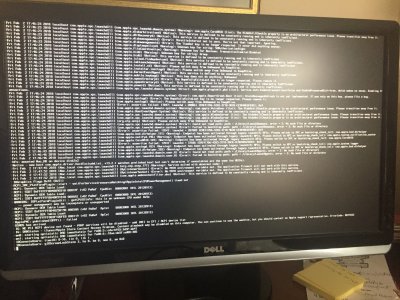- Joined
- Jul 25, 2012
- Messages
- 6,663
- Motherboard
- Gigabyte GA-Z77X-UP5 TH
- CPU
- i7-3770K
- Graphics
- HD 4000+GT 710
- Mac
- Mobile Phone
I didn't specifically set the boot flags when booting with the installer. Rather they seem to be a holdover from the boot flags that I had set when booting Sierra from the original hard drive (using "uia_exclude" to stay within the USB port limit).
I've attached a picture of the Clover screen again. It may have something to do with the weird way that the ASRock motherboard handles its boot entries. In the past I had to go to the shell from the boot loader and execute a bcfg command to specify the specific UEFI file to boot (see this link, post #4)
https://www.tonymacx86.com/threads/anyone-with-asrock-z77-pro3-motherboard.176172/#post1130914
I'm a little confused as to where the boot flags are coming from.View attachment 310256
I don't think you need that anymore since you have installed RehabMan's USBInjectAll.kext in CLOVER.
Just go ahead and boot with [√] FixOwnership in "USB" section in config.plist_Devices and upload verbose boot screen for the effect of that change and not editing the rest of CLOVER uploaded to the Forum.

